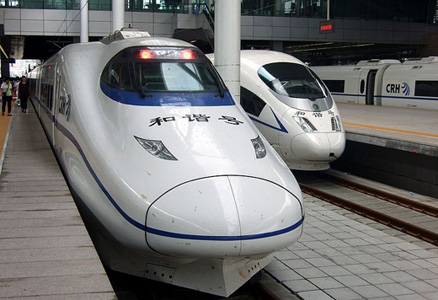
BEIJING — On a crisp Saturday late last year, after participating in a conference on the crisis of capitalism and the future of world socialism, I took the subway to the Beijing Nan (south) rail station. I arrived less than 15 minutes before the scheduled departure of my bullet train to Nanjing, 620 miles away.
I quickly passed through minimal security, and took my assigned seat with time to spare. (Had I missed my train, I was told that I could exchange my ticket for another without penalty.) The train was sleek, the cars were clean but not exceptionally fancy. The train left on time.
The train maintained about 188 miles per hour. I was sure that the view from the window would be dizzying. But with elevated tracks and spotless windows, I had to struggle to unglue my nose from the window when we reached Nanjing, a little over three and a half hours after departing. The one quirk was the onboard clock was one minute slow, although the train left and arrived on time. Can the laws of relativity be fiddling with the clock, I wondered?
In the first three hours of my trip, I must have seen a million trees but not one forest. The trees all appeared to be less than 20 years old, and primarily of a single species. China suffered severe deforestation until recently, but it is now reforesting. All I could think of is that if a beetle fell from Mars and took a liking for that one species, the fumes of decay would soon choke life on Mars. But as we neared Nanjing, the number of species grew, with pleasing clumps of young evergreens. Modern China has a way of correcting itself.
The Nanjing bullet train station, the largest in China, is itself brand new. Like the Beijing station, it is connected to the city subway and bus lines. It is also almost exclusively solar-powered.
My Nanjing host told me that China now has 5,000 miles of bullet-train lines, spanning east to west as well as north to south. Weeks later, China inaugurated the world’s longest high-speed rail line, from Beijing to Guangzhou, and the network now exceeds 5,800 miles.
The train covers the distance from New York to Washington or Boston in about an hour, more than three times the speed of Amtrak trains, at about the cost of budget buses. Special windows have been built to keep the view clear on the bullet train. My host also informed me that freight is now gradually replacing the previous high-speed passenger lines, which ran at almost 125 mph. This of great importance as it helps to raise the overall labor productivity in China.
China’s new rail network is one face of the “stimulus” package rolled out following the open outbreak of crisis in capitalist countries in September 2008; some 20 million Chinese workers producing for export lost their jobs in a space of a few weeks.
But in sharp contrast with stimulus packages in capitalist countries, China’s package created some 20 million new jobs by the spring of 2009. That includes about 500,000 to develop the five main bullet-train lines, soon to grow to eight lines spanning 11,000 miles by late 2015. The stimulus projects built on the existing five-year plan, with a concentration on addressing environmental concerns. Rail, for example, has about one-thirtieth the carbon footprint of planes, and less than half the footprint of trucks and buses.
I left China shaking my head in happy disbelief.
Photo: (CC)












Comments